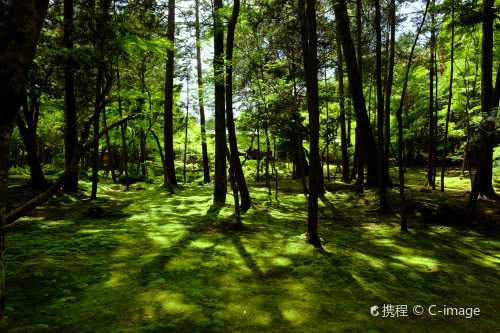Popular Trip Moments
5/5 Breakfast experience at Holly Cafe | Go to this temple before betting in lottery, Marishiten Shrine | ⛩️ Fushimi Inari Shrine – A Kyoto Icon You Can’t Miss ✨ | Kyoto | Coffee shop Unzen, Shijo-style unique breakfast coffee shop | [Kyoto🇯🇵] Visit an open-air old-style cafe in Arashiyama. | Kyoto | Visit the Four Imperial Palaces in the Imperial Palace---Shugakuin Imperial Villa | Katsuo-ji – The Daruma Temple of Victory in Osaka | Kyoto Family Travel Guide: Exploring the Historic City with Kids | Kyoto and World Expo Osaka | Accommodation with great value and convenient location near Namba! | Ryoso Chatani, an excellent experience | [Kyoto] Freshly made is exceptional! Imamiya Shrine's specialty "Aburi Mochi" was so delicious 🍡 | [Kyoto/Gion] Enjoy a delicious steamed course in a Kyoto townhouse😍🍷✨ | Kyoto & Nara 3-Day Ultimate Photography Itinerary | The history and passage of time felt on the stage of Kiyomizu | Wrapped in the golden glow of tranquility | A Journey of the Heart Surrounded by Vermilion Torii Gates | Malebranche | Kyobaum | Miyako City Kintetsu Kyoto Station | A Day Tour of Nara and Kyoto with Raku Tour | Kyoto Nostalgia Journey | 5 Hidden Kyoto Gems You Don't Want to Miss! 🌺 | ⛩️✨ Fushimi Inari Taisha: Kyoto’s Iconic Thousand Torii Gates | A must-visit for Tokyo matcha lovers! Ikeda Tea and the treasure trove of Japanese tea shops | Riding the Eizan Electric Railway: A Day of Green Serenity in Kyoto 🍃🚃 | 【Luxury Twin City Experience】Osaka View Hotel × Kyoto Suiran Luxury Collection Hotel|A Stunning Blend of Japanese Onsen and Urban Charm | Kyoto Arashiyama's Ultimate Elegant Retreat | Daiwa Roynet Hotel Kyoto Ekimae | Double Convenience | Travel in Kyoto, the birthplace of Japanese tea and manga
Recommended Attractions at Popular Destinations
Attraction near Bangkok | Attraction near Manila | Attraction near Tokyo | Attraction near Taipei | Attraction near Hong Kong | Attraction near Seoul | Attraction near Kuala Lumpur | Attraction near Los Angeles | Attraction near Shanghai | Attraction near New York | Attraction near Shenzhen | Attraction near Osaka | Attraction near Singapore | Attraction near London | Attraction near Guangzhou | Attraction near San Francisco | Attraction near Beijing | Attraction near Macau | Attraction near Bali | Attraction near Jakarta | Attraction near Paris | Attraction near Ho Chi Minh City | Attraction near Istanbul | Attraction near Phuket | Attraction near Chicago | Attraction near Seattle | Attraction near Toronto | Attraction near Orlando | Attraction near Cebu | Attraction near Chiang Mai
Popular Attractions
Nami Island | Xiqiao Mountain Scenic Area | Krka National Park | Madame Tussauds Hong Kong | Shanghai Jade Buddha Temple | Night Safari | Yulong Snow Mountain | Renwei Temple | Jingshan Park | Macao Open Top Bus | Lushan National Park | Shanghai Wild Animal Park | Yuanmingyuan Park | War Remnants Museum | Grand Canyon of Tianshan Mountains | North Bridge | Laoniuwan Yellow River Grand Canyon Tourist Area | Bingyu Valley | Changyuan Garden | Slender West Lake | Nu'alolo Trail Parking | Cineteatro Il Portico | Rofan | SHIV TEMPLE JITPUR | Eastern Monroe Public Library | Schlossplatz | Parc des Larris | Mahavir Mandir | Sai Baba Temple | Masjid AQSA
Popular Restaurants in Kyoto
Gion Maruyama | Gion Matayoshi | Kikunoi Honten | Kyo-Suiran | Nanzenji Junsei | Kinmata | Isshi Souden Nakamura | Kodaiji Wakuden | Kikunoi Roan | Ogata | Gion Kawakami | Honwaka Kyoto Honten | KYOTO GION KOME-RYOTEI HACHIDAIME GIHEY | Tagawa | Tempura Yoshikawa | Yamamoto Menzou | Okabeya | cenci | Uosaburo | HANA-Kitcho | Shimogamosaryo | Shunai Sasaki | Mizuki | Pound Kyoto Ekimae | Mitsuyasu | Kifune Ugenta | Honke Tankuma Honten | Itoh Dining | Touzan - Hyatt Regency Kyoto | STEAK OTSUKA
Popular Ranked Lists
Popular Luxury Hotels in Astana | Top 9 Local Restaurants in Lushan Global Geopark | Popular Luxury Hotels Near Fukushima | Popular Luxury Hotels Near Silivri | Popular Must-Visit Restaurants in Melbourne | Top 7 Best Things to Do in Lu'an | Popular Best Things to Do in Jiaozuo | Popular Premium Hotels Near Kinshasa | Top 3 Luxury Hotels in Tashkent | Popular Luxury Hotels Near Fort William | Popular Must-Visit Restaurants in Bruges | Popular Best Things to Do in Liancheng | Popular Must-Visit Restaurants in Phuket | Popular Luxury Hotels Near Taean-gun | Popular Must-Visit Restaurants in Osaka | Popular Must-Visit Restaurants in Bangkok | Popular Must-Visit Restaurants in Singapore | Popular Must-Visit Restaurants in London | Popular Must-Visit Restaurants in Fukuoka | Popular Must-Visit Restaurants in Milan | Popular Must-Visit Restaurants in Sydney | Popular Must-Visit Restaurants in Songyang | Popular Must-Visit Restaurants in Frankfurt | Top 3 Luxury Hotels in Almaty | Popular Luxury Hotels in Kathmandu | Top 3 Best Things to Do in Dezhou | Top 9 Best Things to Do in Qingyuan | Top 8 Luxury Hotels in Hurghada | Popular Best Things to Do in Suining | Top 5 Best Things to Do in Suqian
Payment Methods
Our Partners
Copyright © 2025 Trip.com Travel Singapore Pte. Ltd. All rights reserved
Site Operator: Trip.com Travel Singapore Pte. Ltd.
Site Operator: Trip.com Travel Singapore Pte. Ltd.









